Attitude of the population to the housing situation in the greater Zurich area
December 21, 2016 - Alex Martinovits
In the case of important topics such as "housing", in addition to the "hard" facts, the subjective attitudes and perceptions of the population are also central. For this reason, questions have been asked in the city of Zurich as part of the periodic population survey since 1999. Since there are no comparable assessments of the population on the subject of housing at the regional level so far, Stadtentwicklung Zürich has collected some questions on the subject of housing outside the city of Zurich and had them evaluated for the area of Regional Planning Zurich and surroundings (RZU). The area of the RZU includes the city of Zurich and the six adjacent planning regions (Figure 1; further explanations at the end of the article). Of particular interest are the differences between different types of municipalities (explanations of the community typology also at the end of the article). The results will be published in two web articles.

This web article deals with the perception of the problem and the attitudes of the population to various aspects of housing. The perception of housing as an important problem, the satisfaction with the housing supply, the assessment of the rent level as well as the satisfaction with one's own apartment and the living environment were determined. Questions were also asked about the disadvantages of the current housing situation. The second web article on the same survey is dedicated to the attitudes of the population to structural change and densification in recent years.
Housing as an important problem
In the open question of the three biggest problems in one's own residential community , housing problems occupy a top position (Figure 2). In the entire RZU region, respondents call the topic of housing the second most frequently after traffic and even before foreigners' questions.
In the core city of Zurich (in the present evaluations identical to the community type "large centres"), "living" is mentioned as a problem much more often than in other types of municipalities; this also applies to traffic. In the high-income municipalities and in the workplace communities, the topic of "housing" is already less important, and it is much less important in the suburban and peri-urban communities.
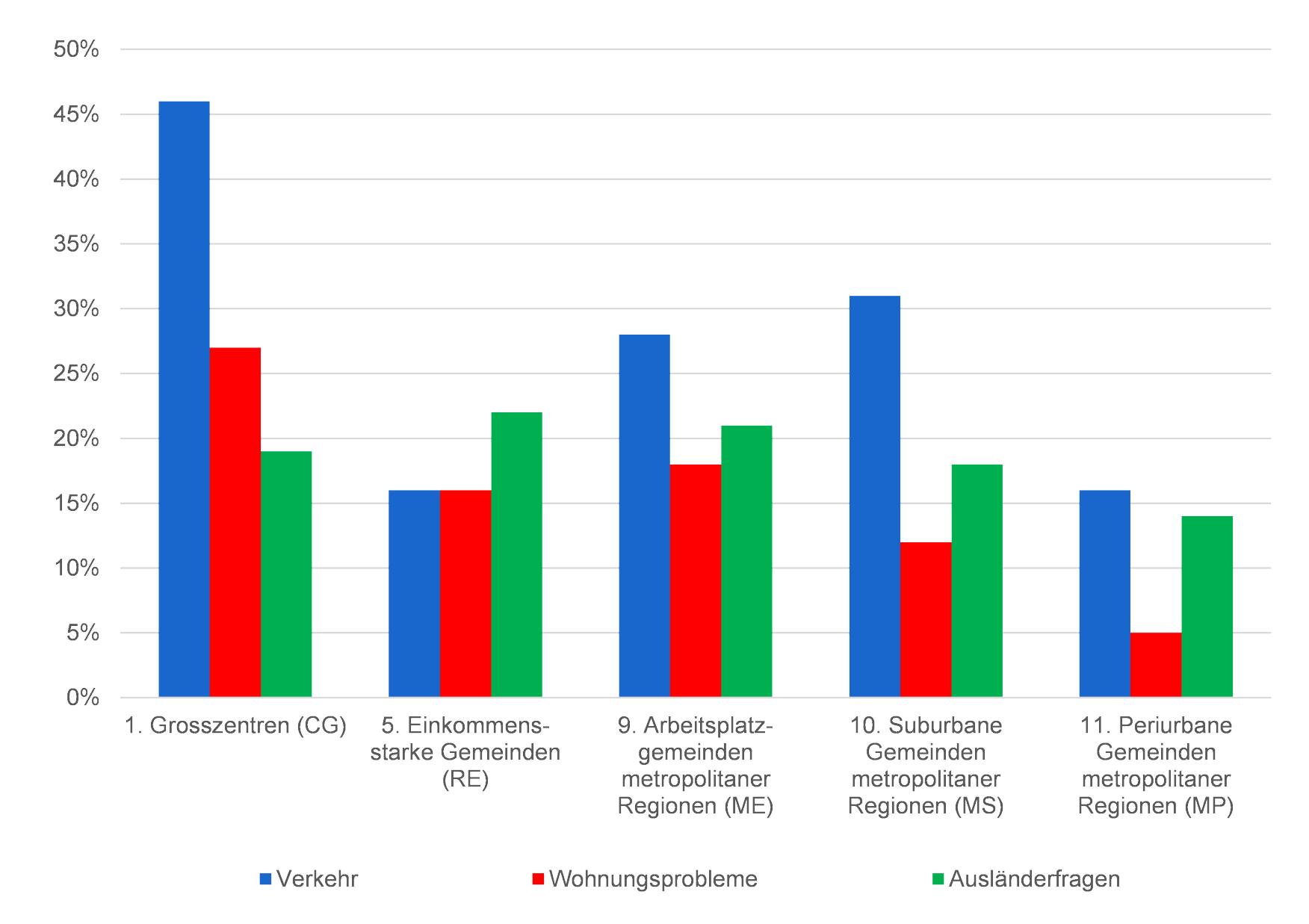
Assessment of the rent level
Satisfaction with the rent is significantly higher in the city of Zurich than in the other types of municipalities. This applies both in terms of price-performance ratio and in relation to income (Graphs 3 and 4). Satisfaction is lowest in high-income communities.
The comparatively high level of satisfaction in the city of Zurich with the rent of one's own apartment can be explained by the fact that the average existing rents in the city of Zurich are only slightly more expensive than in the surrounding area despite the central and attractive location. This has to do with the large proportion of older, relatively inexpensive apartments as well as with the large proportion of non-profit apartments with cost rent. The existing rents are decisive for the assessment of your own rent. The usually higher offer prices of the publicly advertised rental properties, on the other hand, shape the perception of those people who are looking for accommodation (often coming from outside the greater Zurich area and not very networked). In terms of offer prices, there is a significant price difference between the usually more expensive city of Zurich and the greater part of the surrounding municipalities.
In the long term, an expansion of low-cost segments could increase satisfaction with the (existing) rent in municipalities with few corresponding offers.
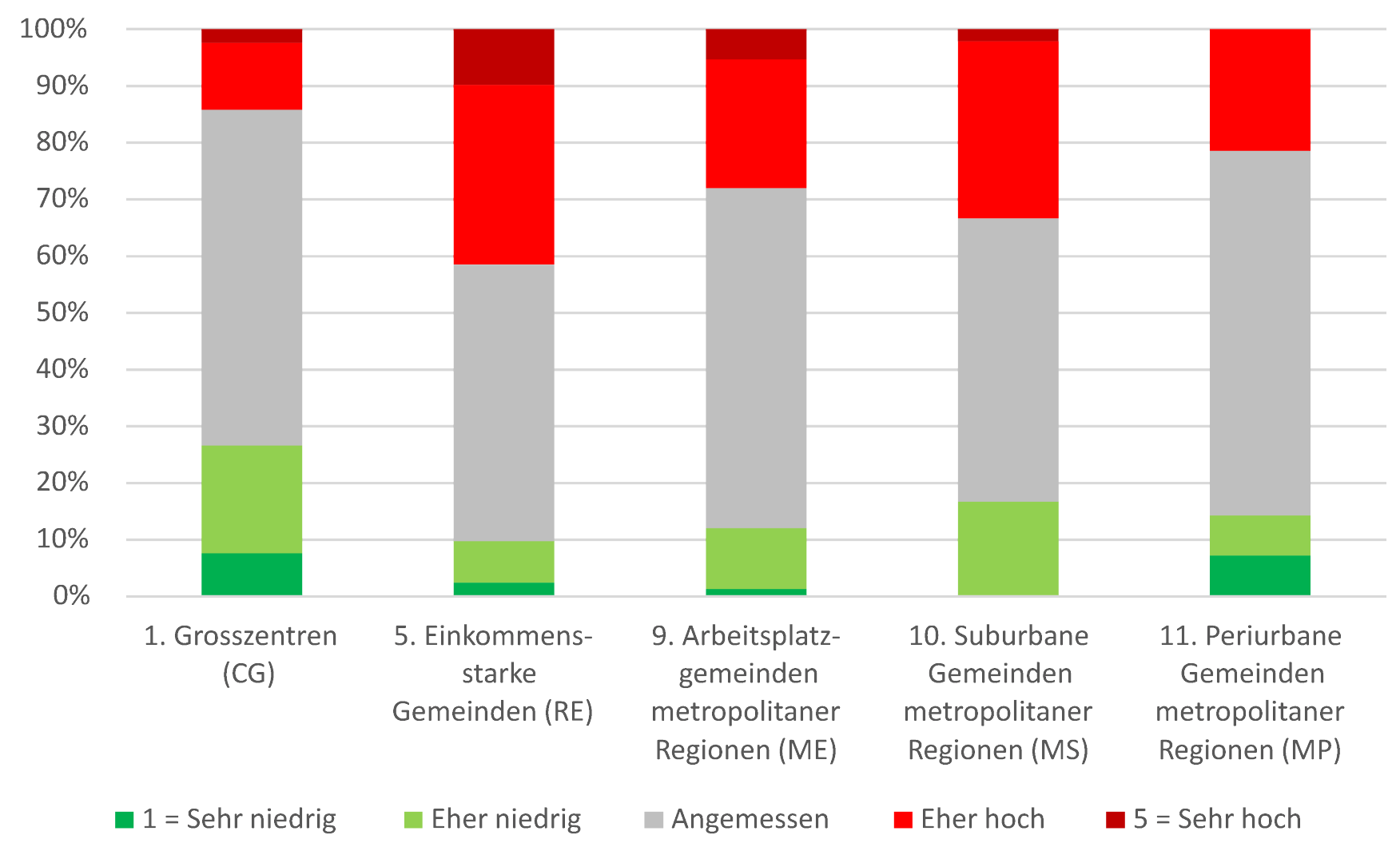
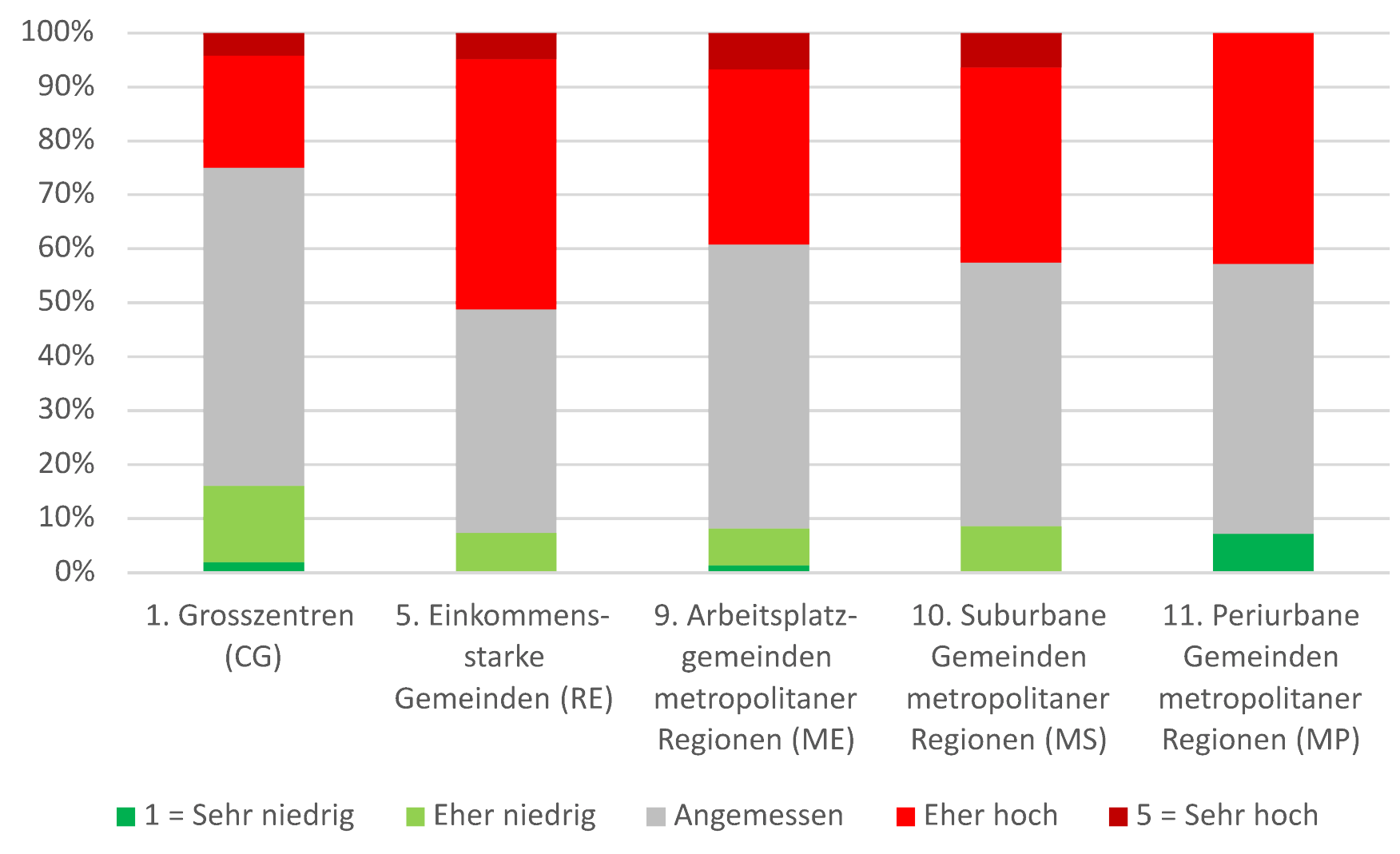
Satisfaction with the housing supply
Around half of those surveyed are satisfied or very satisfied with the housing supply, but the other half give only slightly sufficient or even insufficient ratings (Figure 5). Satisfaction with the housing supply in the core city of Zurich is significantly lower than in the other types of municipalities. The high-income municipalities also have a slightly lower level of satisfaction than the job communities and the sub- and peri-urban communities.
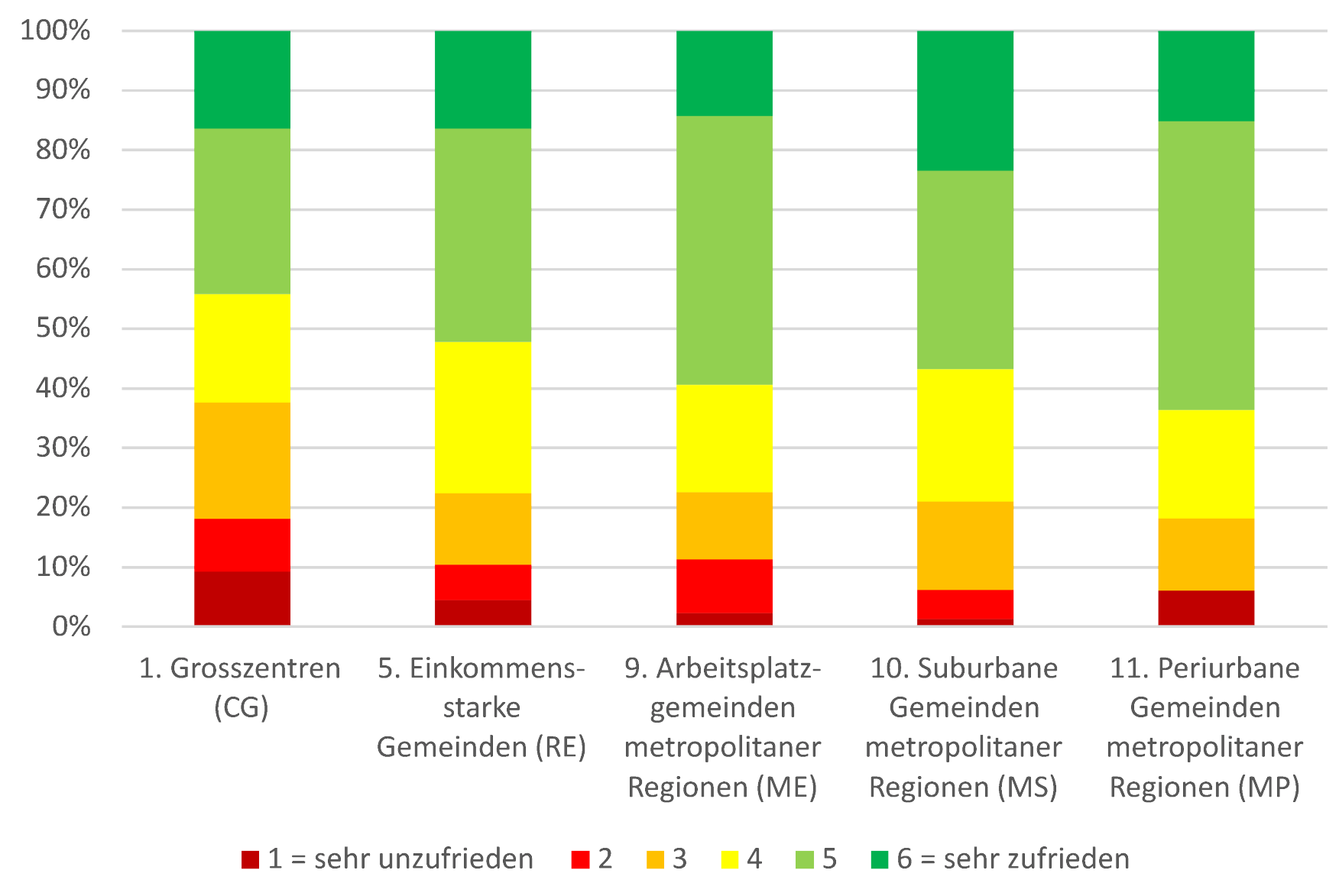
From the interplay between the question on the housing supply (Figure 5) and the assessments of the rent (Graphs 3 and 4), it can be concluded that the perception of the topic of housing as a major problem in the city of Zurich is above all a quantitative supply problem . In addition, there is the difficulty of finding a suitable apartment at all. The rent level of one's own apartment is perceived less seriously. In the core city, the supply of the very high demand is far from sufficient in purely quantitative terms. This is also evident in the significantly lower vacancy rate in the city of Zurich for decades compared to all surrounding municipalities. On 1 June 2016, this was only 0.22 percent in the city of Zurich, while in the rest of the RZU area it was 1.09 percent. The probability of finding a corresponding object in a short period of time is correspondingly lower in the core city. This quantitative supply problem is likely to be difficult to solve as long as the core city remains attractive as a place to live.
Satisfaction with the living situation and perception of its disadvantages
The satisfaction with your own apartment is high overall. It is highest in the peri-urban communities, where there are significantly more very satisfied respondents in particular (Figure 6). Satisfaction is second greatest in high-income communities. In the other three types of municipalities, this assessment is similar and somewhat lower.
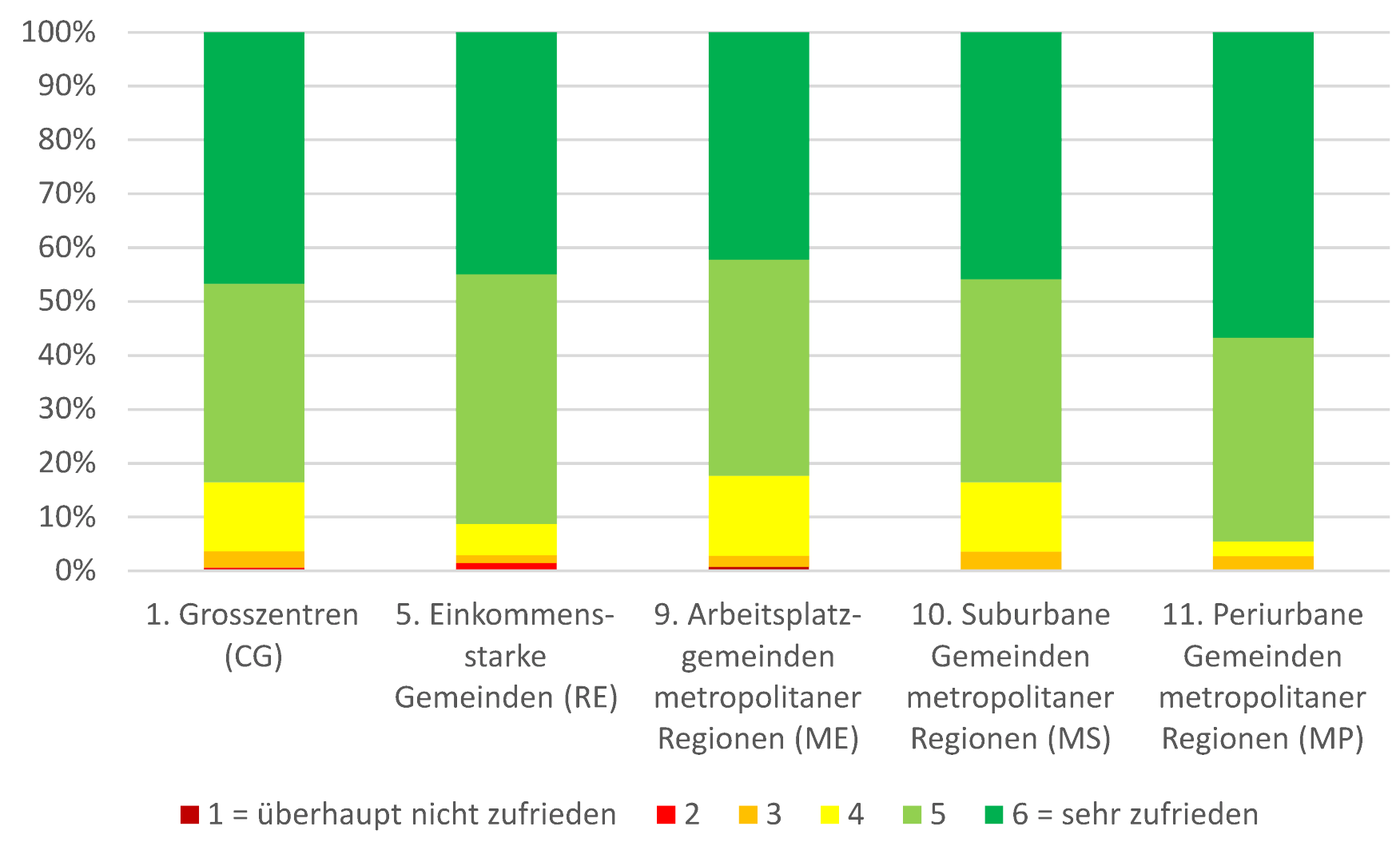
In most types of municipalities, including the core city of Zurich, the most common disadvantage of apartments is their smallness (Figure 7). In the high-income municipalities , on the other hand, the high age of the apartments is in the foreground.
The creation of more new, current demands more corresponding apartments is likely to be a widely accepted strategy in most types of municipalities.

Satisfaction with the immediate living environment is also high overall. It is largest in the peri-urban communities, and comparatively lowest in the workplace communities (Figure 8).
In the residential environment, the proximity to nature and the tranquility are most missed in the core city, in the other types of municipalities there are shortcomings in traffic (Figure 9). In the high-income municipalities, the insufficient connection to public transport is often mentioned. The lack of peace and quiet is criticized comparatively often not only in the core city, but also in the high-income and workplace communities.
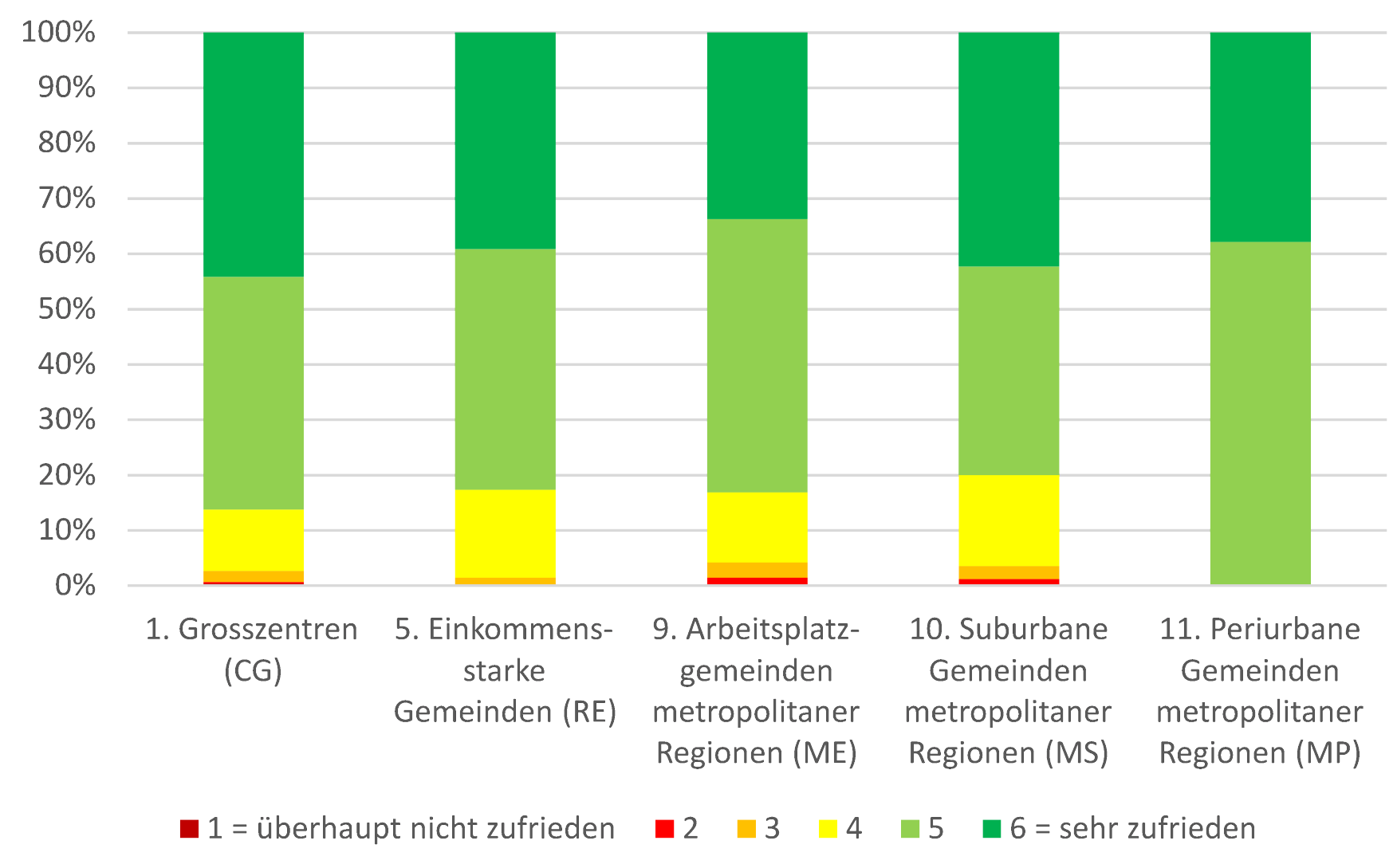
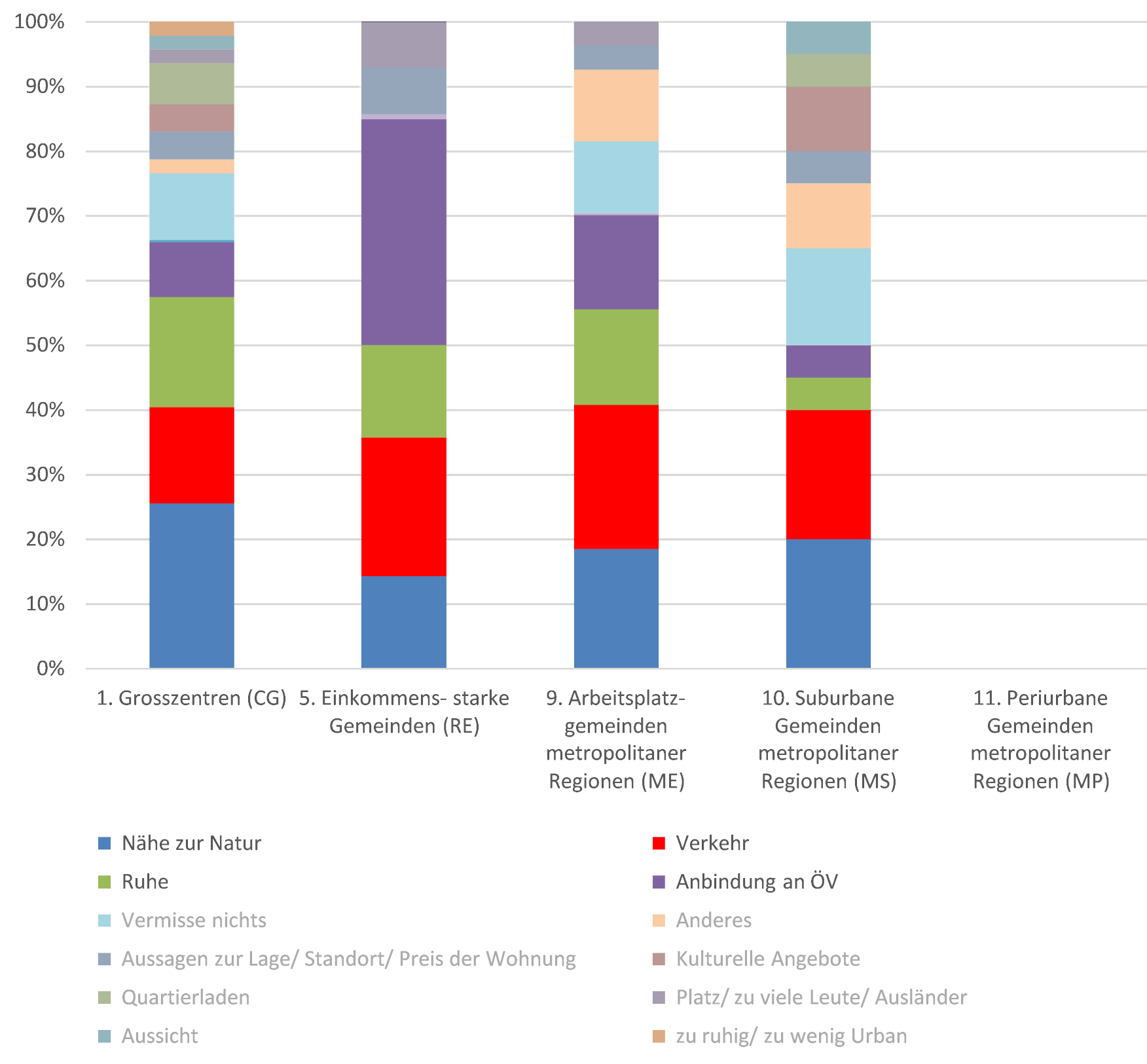
More information
Method / Sources
The underlying survey was conducted on behalf of Stadtentwicklung Zürich by the research institute gfs-Zürich throughout the canton of Zurich. In the Omnibus survey, questionnaires from several clients were combined into an overall survey.
The CATI Bus Zurich was conducted as a telephone survey. The selection was carried out by means of random quota procedures. The quality assurance was supported by audio recordings of all interviews and constant supervision.
The survey took place between 29 February and 19 March 2016. A total of 1009 people aged 18 and over were interviewed, 305 in the city of Zurich, 347 in the rest of the RZU region and 357 in the rest of the canton of Zurich.
The sample sizes do not allow to interpret small differences between subgroups. Only large, significant differences may be interpreted. This article is limited to appropriate interpretations. With a sample size of around 1000 respondents, the true value of a 50% expression is no more than 2.5%, and the true value of a 20% or 80% expression is no more than 3.2% away from the stated value. With a smaller subgroup of around 300 respondents (for example, for the city of Zurich alone). The true value of a 50% expression is not more than 5.8%, and the true value of a 20% or 80% expression is not more than 4.6% from the stated value. These statements apply with 95% certainty.
Terms
Regional Planning Zurich and surroundings (RZU)
The present analysis covers the area of Regional Planning Zurich and the Surrounding Area (RZU), which includes the most closely networked spatial planning regions of the canton with the core city of Zurich. These include the spatial planning regions of the city of Zurich, Furttal, Glatttal, Limmattal, Pfannenstil, Knonaueramt and Zimmerberg.
Municipal typology 22 of the Federal Statistical Office
The results of the survey were evaluated according to five different types of municipalities, based on the municipal typology 22 of the Federal Statistical Office (FSO). This was developed by a team of researchers from the EPFL on behalf of the FSO. The approximately 3000 municipalities in Switzerland are classified according to a centre-periphery concept and various criteria according to 22 types of municipalities and were last updated on the basis of the 2000 census. Only five of these 22 types of municipalities exist in the RZU area In the report, the terms "core city" and "city of Zurich" are also used as synonyms for the former type of municipality "large centre".
Existing rents
The existing rents include all rental prices of all existing rental properties. This is in contrast to the offered rents, which only include the small part of the rental properties publicly advertised on the market.